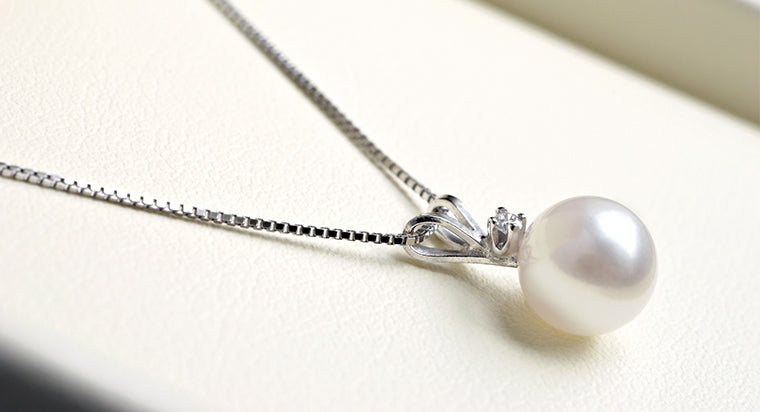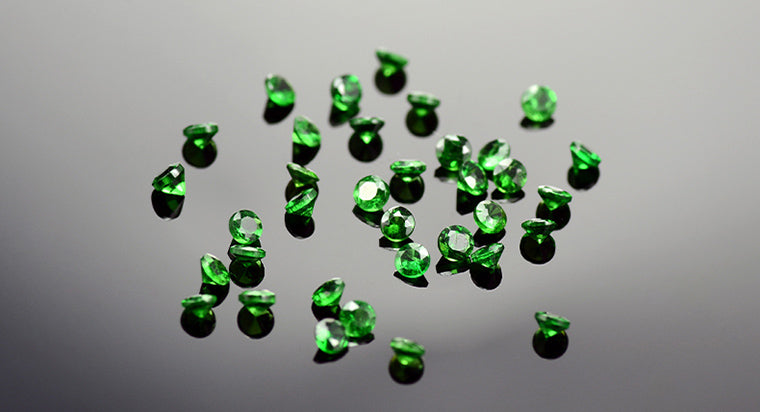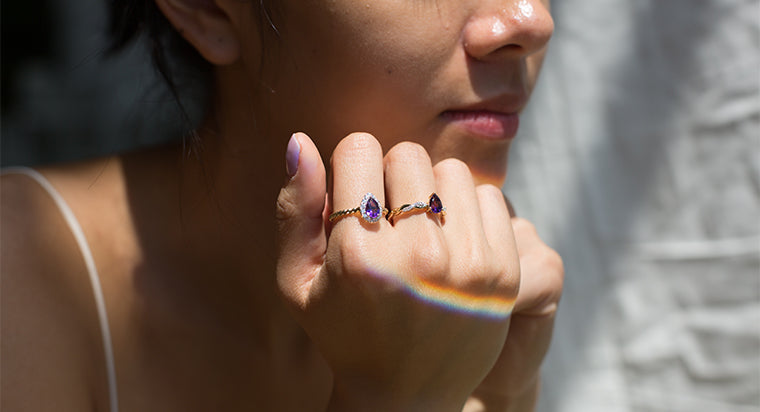Black Diamond Value and Worth
TABLE OF CONTENTS
How Much Is a Black Diamond Worth
Everyone who has ever considered engagement rings is clearly aware of both natural and lab-created white diamonds. However, those looking for a novel gem experience may wish to consider less obvious options to the traditional white diamond solitaire engagement ring. If you are looking for a forever token of your affection while making a unique statement, you may wish to consider a black diamond.
Black Diamond Color and Inclusions
Natural black diamonds differ from other diamonds in that they are completely opaque. These gemstones are not transparent in nature and owe their intense color to the inclusion of graphite and random clustering that occurs throughout the body of the diamond. Although natural carbonado can be reasonably affordable, those looking for affordable black diamonds will find that treated black diamonds are a much more affordable option.
Black Diamond Origin
Rare, naturally occurring, black diamonds are found in places like Central Africa and Brazil. Much rarer than white diamonds, natural carbonados are highly valued for their unique beauty and intense color.
The Relationship Between Color and Value
Many of the black diamonds jewelry buyers encounter aren't natural. Natural carbonados obtain their color from multiple inclusions that are spread throughout the stone. Moreover, it is rare to find diamonds with the optimal number of inclusions required to make the stone black. Therefore, many of the black diamonds you are likely to encounter are altered.
Many of the dark gems that you encounter will be a naturally white diamond that has been altered through irradiation or heat treatments. You will generally find that the less expensive black diamonds in the market are actually heavily included white diamonds. Moreover, those white diamonds are treated to turn into a dark green that appears black.
Other Variables That Impact Cost
As you may know, white diamonds, rely upon the four C's: carat, cut, color, and clarity to determine their value. Carbonado value on the other hand, depends more upon the carat, cut, shape, and ring style.
Clarity, which is a consideration in white diamonds, plays a minor role in the value of these dark gems due to the nature of the stone. Because of the opaque nature of carbonados, GIA's Diamond Grading System is different for these colored diamonds. Likewise, as carbonado is usually uniform in color, color isn't considered a crucial aspect of determining the value of black diamonds compared to carat weight, cut, shape, and ring style.
Carat Weight or Size:
All gemstones vary in price according to the size, or carat weight, of the stone. Just like natural white diamonds, both natural and treated carbonados increase in value as they increase in weight/size. Often you will find that what appears to be a small increase in carat weight, has a large impact on the cost of your diamond jewelry.
Cut:
Natural black diamonds are more difficult to cut, polish, and set than other natural diamonds. This is due to the inclusions that provide the color to the gemstone. These inclusions, often of graphite, also increase the likelihood that a natural carbonado will pit when polished. These natural inconsistencies in the body of the stone likewise increase the possibility of the stone becoming damaged in the setting process.
Shape:
You will find the size, shape, and luster of a black diamond greatly determines the value of the stone. Therefore, it is important to assure that you value the shape of your black diamond. Black diamonds nowadays are cut with lasers. With that said, any shape is feasible. The most popular shapes for carbonados are: round, oval, princess, and pear.

Ring Style:
You may expect the ring style to have a significant impact on the cost of your black diamond ring. As the value of black diamonds increases significantly with size, you may expect any constellation of stones to be expensive when a large carbonado serves as the center.
That said, a 3 carat solitaire will be more reasonably priced than a 3 carat three stone, or halo set black diamond. Though stunning to behold, a halo set black diamond surrounded by smaller white diamonds can be an expensive ring choice. However, if the halo impact allows you to choose a smaller center stone, it may be a wise-cost choice. A reasonable and visually engaging mid-ground is to choose a three-stone ring with a carbonado stone set between two white diamonds.
What Makes Black Diamonds Inexpensive
Lab-grown:
Less expensive diamonds can be altered to mimic natural black diamonds. A process of exposure to extreme heat can turn these lesser quality diamonds to a dark green or black color. You will find these heat-treated diamonds to be considerably less expensive than untreated natural carbonados. Especially, if these white diamonds were lab-grown because lab-grown diamonds are cheaper since they are not mined from the environment.
Chemical Makeup:
Carbonados are the same as white diamonds with the exception of the fact that these dark gems have graphite inclusions. It is these inclusions that account for the color of natural black diamonds. The inclusions that provide natural black diamonds with their striking color also make them difficult to cut, polish, and set, however. It is this delicate nature of natural black diamonds that make them a more reasonable cost alternative to their less colorful counterparts.

FAQs
How much are diamonds worth?
How much is a 1 carat diamond worth?
Are lab created diamonds worth anything?
How much is a black diamond worth?









